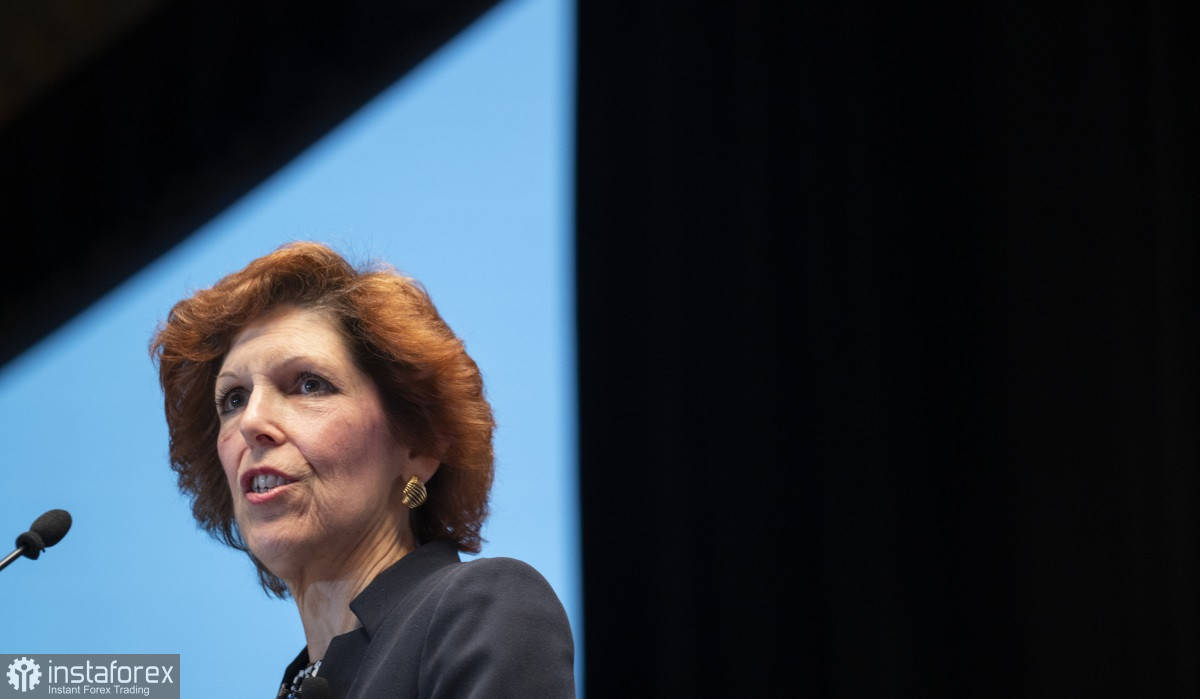The euro and the pound continue to rise while U.S. central bank officials are becoming increasingly inclined toward soft monetary policy. The reason for this is declining inflation, which echoes the risk of a new banking crisis.

Federal Reserve Bank of Cleveland President Loretta Mester said Tuesday that policymakers should raise their key interest rate above 5% this year and then hold it at a restrictive level for some time to suppress inflation, with the exact level depending on how quickly price pressures subside.
"For inflation to fall sustainably to 2%, monetary policy needs to move somewhat further into restrictive territory this year, with the fed funds rate moving above 5%." Mester said at an NYU Money Marketeers event.
Recall that as recently as last month, Fed officials raised interest rates by a quarter of a percentage point, bringing their policy benchmark to a target range of 4.75% to 5%. A year earlier, the rates were at zero. Forecasts published at the same time showed that 18 officials expect rates at 5.1% by the end of the year, but the markets see the situation a little differently. According to the swap market, the first rate cut is expected in December of this year. The absence of aggression and new guidelines in the statements of the Fed members confirm these guidelines. Quite a lot of people have recently been saying that rates should be higher than 5.0%, but 5.1% and 5.9% are different things. And, most likely, we are talking about a lower threshold.
During the Q&A session, Mester also said that the Fed officials' decision to raise rates by a quarter of a percentage point in March is the right one, despite a string of bank failures that have caused turmoil in financial markets. "Things have stabilized for now," Mester said, pointing to actions by the Fed and other regulators to contain the spread of the banking crisis outside the U.S.
The policymaker also said she is keeping a close eye on economic data to determine how much recent stress in the banking industry could limit access to credit or slow the economy. Some experts speculate that the U.S. central bank will continue to raise interest rates at least one more time in line with the latest quarterly projections.
Mester said the end point of interest rates will be determined by how long it takes for the economy to cool and price pressures to ease. "How high interest rates have to rise to and how long policy stays restrictive depends on how quickly inflation and inflation expectations decline," she said in her prepared remarks.
Mester also said she expects a "significant" improvement in inflation soon, with price increases falling to around 3.75% this year and hitting the central bank's 2% target in 2025.
As for the technical picture of EURUSD, the bulls still have every chance for continued growth and another update of the March highs. For this to happen, it is necessary to remain above 1.0930, which will allow to go beyond 1.0975. From this level, fruther upward movement to 1.1000 is possible and with the prospect of updating 1.1035. In case of the decline of the trading instrument around 1.0920, I expect any actions from large buyers. If there is no one there, it would be nice to wait for the update of the low at 1.0880, or to open long positions from 1.0840.
As for the technical picture of GBPUSD, the bulls continue to control the market, and for the trend to develop, it is necessary to stay above 1.2460, and break through 1.2520. Only a breakdown of this level will strengthen hopes for a further recovery to the 1.2560 area, after which it will be possible to speak of a sharper upward spurt of the pound to the 1.2590 area. If the pair falls, the bears will try to take control of 1.2460. If it succeeds, the breakdown of this range will hit the bulls' positions, pushing GBPUSD to the low of 1.2390 with the prospect of an exit at 1.2330.





















